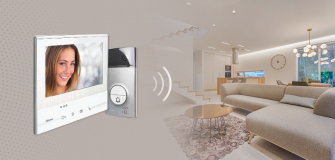5 Tips to Ensure Agile Data Center Design
According to Gartner, by 2021, 50 percent of data centers will use SSAs for high-performance computing and big data workloads; up from less than 10 per cent in 2018. Source
Whether small or hyperscale, a cloud service provider or business looking to keep data updated, quality design is essential in creating and maintaining a highlight efficient, agile, scalable and modern data center.
Investment in infrastructure is costly; therefore, it makes sense for all organisations to generate maximum output from its resources, particularly as business needs dictate an ‘always on’ approach to data accessibility.
To be successful in this market, the design must be repeatable, use standardised components, while understanding that there will always be site adaptation that has to be made. Data center design and strategy can have an enormous impact, which in turn can lead to cost savings, ability to scale as well as reduced environmental impact. With this in mind, let’s take a look at six critical considerations for all businesses looking to build, run and sustain an agile data center.
1. Install a Solid Power & Cooling Strategy
A large proportion of data center outages and overhead costs can be directly tied to the power and cooling systems used. If inadequate cooling is implemented, the power required to cool a data center can match or exceed the energy used to run IT equipment.
To address this issue, organisations must control airflow and cooling via containment and active airflow management. This provides modular power and cooling with scales with expansion as well. After this, real-time trend reporting should be implemented to ensure that costs are low, and potential issues are identified before they turn into significant problems.
Additionally, choosing the right server racks allows organisations to house their equipment properly while leaving space for growth as well. Several modern data centers contain rows of empty shelves to help facilitate proper airflow until they are filled.

2. Implement Workflow and Repeatable Processes
A data center is essentially a living ecosystem that requires assets to be deployed and updated regularly. One critical design practice includes making sure that workflow and repeatable processes are being used to ensure all actions are transparent, traceable and auditable.
Data center automation increases agility and energy efficiency. It reduces the time IT needs to perform routine tasks and enables them to deliver services in a repeated, automated manner. Ideally, the data center provider would have API access to infrastructure, allowing it to operate with public clouds so that customers could migrate data or workloads from cloud to cloud.
Data center automation is primarily delivered through software solutions that grant centralised access to most data center resources. The benefits of implementing automation are immensely valuable as it:
- Provides insight into server nodes and configurations
- Automates routine procedures like patching, updating, and reporting
- Produces and programs all data center scheduling and monitoring tasks
- Enforces data center processes and controls in agreement with standards and policies
3. Focus on Smart Wiring From the Beginning
A smart wiring strategy will help in reducing outages, increasing the overall speed and agility, making new equipment additions easier and much more. Without a structured wiring plan in place, data centers can become inefficient very quickly.
The two main areas where a useful cable management plan is necessary are:
- Within the Server Racks: Dozens, or even hundreds of cables have to make their way in and out of server racks; therefore it is essential to ensure that they run correctly to avoid excessive tangling and other issues. Using horizontal or vertical cable managers can help tremendously with this issue.
- Within the Floor or Ceiling: Data center cables must run neatly and in a straight line according to the data center architecture. In these areas, labelling the wires on both ends for easier troubleshooting leads to increased speed and efficiency.
4. Don’t Neglect Physical Security
While designing a modest data center with less sensitive information, it is crucial to ensure the entry and exit of authorised personnel only. This helps data centers managers keep track of who is working what equipment and why. Additionally, each time someone enters a data center, they bring with them dust and other contaminants which could be hazardous to human and machine health.
For more extensive facilities or those that contain large amounts of highly sensitive data, physical securing becomes even more essential. Numerous large-scale data centers have physical barriers, preventing unauthorised access to the property. To get to the actual data center, having doors with biometric scanners can provide utmost security to data center infrastructure and operations.
Finally, investing in enclosed server racks also helps in long term data center physical security. These server racks help to prevent both theft and potential damage, as they are typically lockable. Data center managers can control who truly has access to the servers.
5. Plan for a Good Post-Go-Live Support System
When designing a data center, it’s crucial to keep in mind that all effort should be focused on the actual areas where servers and other equipment are present.
Another important aspect, however, is planning for adequate space for the support team to work from. In most cases, this means an office area just outside the data center itself.
The team is crucial to monitor equipment and keep an eye out on data center activities at all times. In most cases, the staff includes both IT professionals, who support the hardware and software within the data center, and other personnel who support the cooling systems, humidity levels, wiring, physical server racks, and more.
Having a place for them to work will allow for rapid responses to outages and easy access for ongoing maintenance and upgrades.

At Legrand, when building a data center, customer requirements are vital. By focusing on the essential elements of those requirements and understanding the intent of what our customers are looking for, we build facilities that provide everything our customers need; always being supportive, agile partners throughout the process. We have a team of specialists that design and build innovative solutions including enclosures, server racks, cooling, power, structured cabling and access management to meet your unique requirements.




















